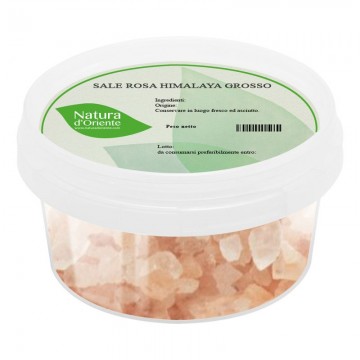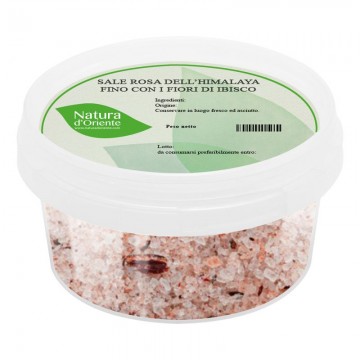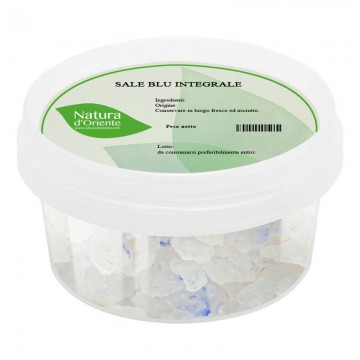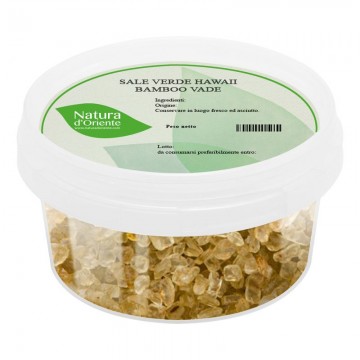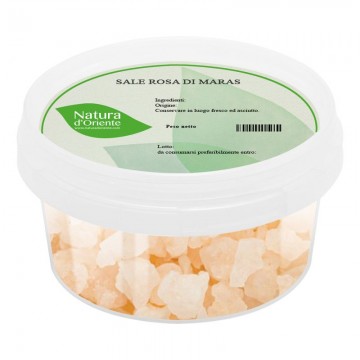Basil salt is an excellent alternative to herb pesto, or to preserves in oil.
Basil salt in grains
The characteristics of the gourmet sea salt with basil, which adds this fresh herb, allows it to be used even out of season.
Basil salt in grains: characteristics and benefits
Especially at the end of summer, in the kitchen the scent that is missing the most is that of basil. For this, it becomes natural to use this salt to savor the summer scents. In the middle of winter, this basil flavored salt is perfect for flavoring various simple-simple dishes. You can use this salt to season and finish dishes that naturally go well with basil, as well as meat, fish, and all the recipes of the Mediterranean diet - in which basil is always appreciated!
The base is formed from integral sea salt, preferable to refined cooking salt. The integral one is obtained in the salt flats by simple evaporation of sea water. It therefore maintains minerals and trace elements that are important for the body. Whole sea salt contains less sodium and dozens of essential minerals and trace elements useful for cellular processes. It is easily absorbed by the body, with an alkalizing action that stimulates the immune system.
Origins and History of cultivation
The salt is collected inside the salt flats, where usually two different types of tanks are used for this process. In one, sea water is collected during ocean tides to concentrate the brine. In another, the crystallization tanks produce the salt, through evaporation and crystallization. Solar evaporation is the oldest method for salt production. In hot climates, where the evaporation rate is high and the wind is constant, it is easier to crystallize the salt collected in brine.
The salt is made to crystallize to the point of saturation, and then the salt deposit is collected when it reaches a certain thickness. With this method, the purity of the salt approaches 100%. The raw or whole salt can be subjected to various necessary or further transformation processes - washing, drying and sieving. In the preparation of the flavored salt, the natural basil extract is mixed with the salt, making it bright green like the plant. This aromatic herbaceous plant is used for its wide diffusion in the kitchen, growing in all warm and temperate regions of the world.
Nutritional values of basil salt in grains
This salt contains mostly sodium chloride, as well as trace minerals such as iron and potassium, calcium, iron, magnesium, zinc and copper.
How to use the salt:
You can sprinkle a little basil salt on many dishes and foods, almost all those of the Mediterranean diet. Excellent on salads and raw tomatoes as a finishing salt, also for baked tomato recipes, and vegetables of all kinds. Ideal on caprese salad, on soft cheeses such as mozzarella, on eggs.
Excellent in the preparation of pizza and homemade pesto. On simple pasta dishes, it becomes a delicious touch, also useful in tomato and basil sauces to enhance the flavor. For the main courses it can be used on pan-fried fish, steamed, baked or grilled fish recipes.
Its delicate flavor enhances that of the fish. On red meats it flavor finishes on beef Excellent in soups, for roast potatoes or vegetables such as green beans and asparagus. In some recipes it can flavor popcorn, and as an extra flavor for unsalted butter. It can be used on the edge of fresh fruit and herb cocktails (some drinks use basil).
E side effects and contraindications
Caution is advised in the intake of sea salt in case of hypertension, pregnancy and breastfeeding. Furthermore, it is good to moderate the quantities in case of cardiovascular disorders, diseases related to the kidneys and blood vessels.






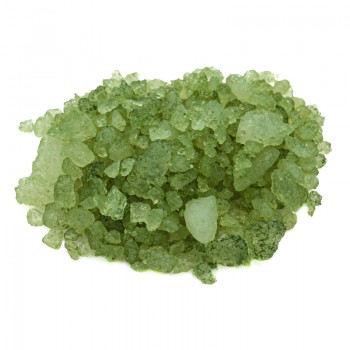


 No reward points for this product.
No reward points for this product.

